William Henry Playfair – Edinburgh’s architect
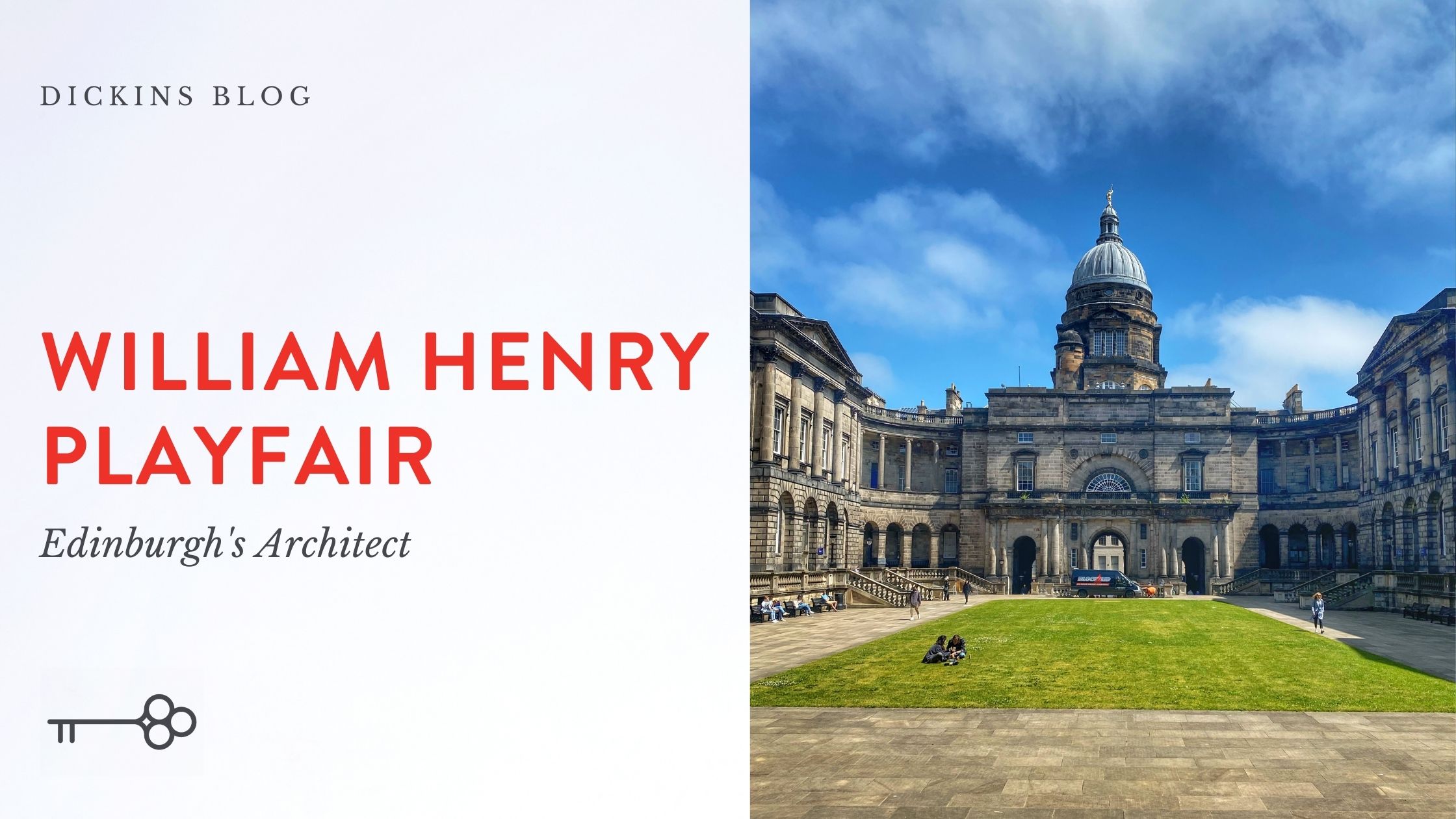
One of the (many) reasons we fall in love with Edinburgh over and over again is the architecture. So it seems only fitting to celebrate someone who has had a significant impact on Edinburgh’s cityscape. On 15 July 1790 William Henry Playfair was born in London and 231 years later, we still marvel at his work and share it in Instagram photos for the world to see. How well do you know the Playfair buildings and monuments around Edinburgh? Keep reading, and by the end, we hope you know a little more…
William Henry Playfair
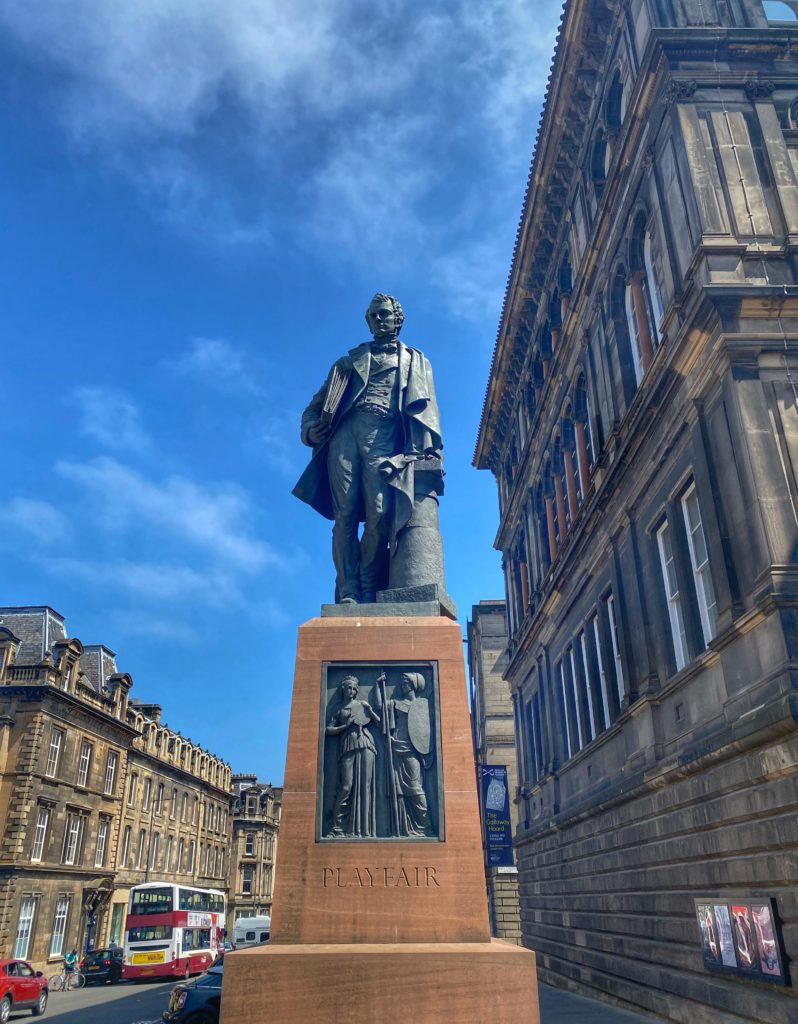
A monument to William Henry Playfair can be found on Chamber’s Street, just outside the National Museum of Scotland.
After being born and spending his younger years in London, William Henry Playfair moved up to Edinburgh to live with his uncle, the scientist and mathematician, Professor John Playfair. He attended Edinburgh University where he graduated in 1809. It shouldn’t come as too much a surprise that William’s father was an architect too. He quickly began working under William Stark, but following Stark’s death in 1813, he moved to London.
Staying in our Simpson Loan home will have you just a short walk away from Playfair’s monument on Chamber’s Street and Edinburgh University’s Old College.
William Stark is another influential name in the Edinburgh cityscape and although his buildings haven’t survived, his influence on Playfair’s approach to design can be seen today.
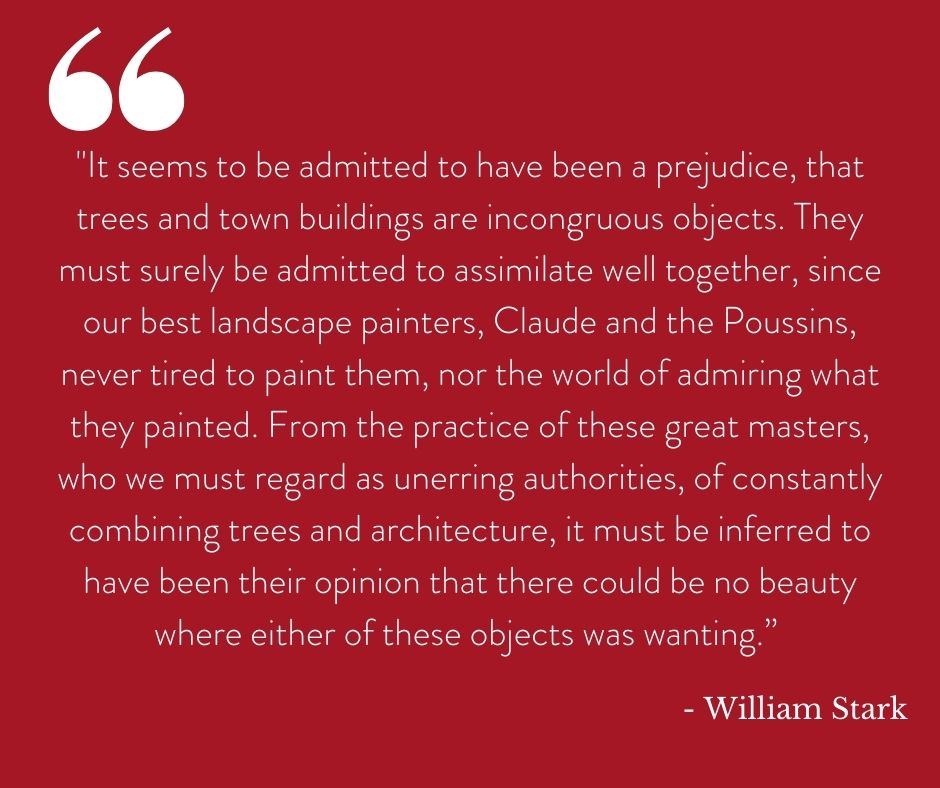
If we take a step back and compare the town planning and design behind Edinburgh’s New Town to the East New Town’s Calton Terrace, Regent Terrace and Royal Terrace, which are accredited to Playfair, it is easy to see the words and guidance from Stark stuck with him. Taking the natural landscape into consideration, planning and building within the lines of nature, working around Calton Hill rather than flattening or making it disappear altogether.
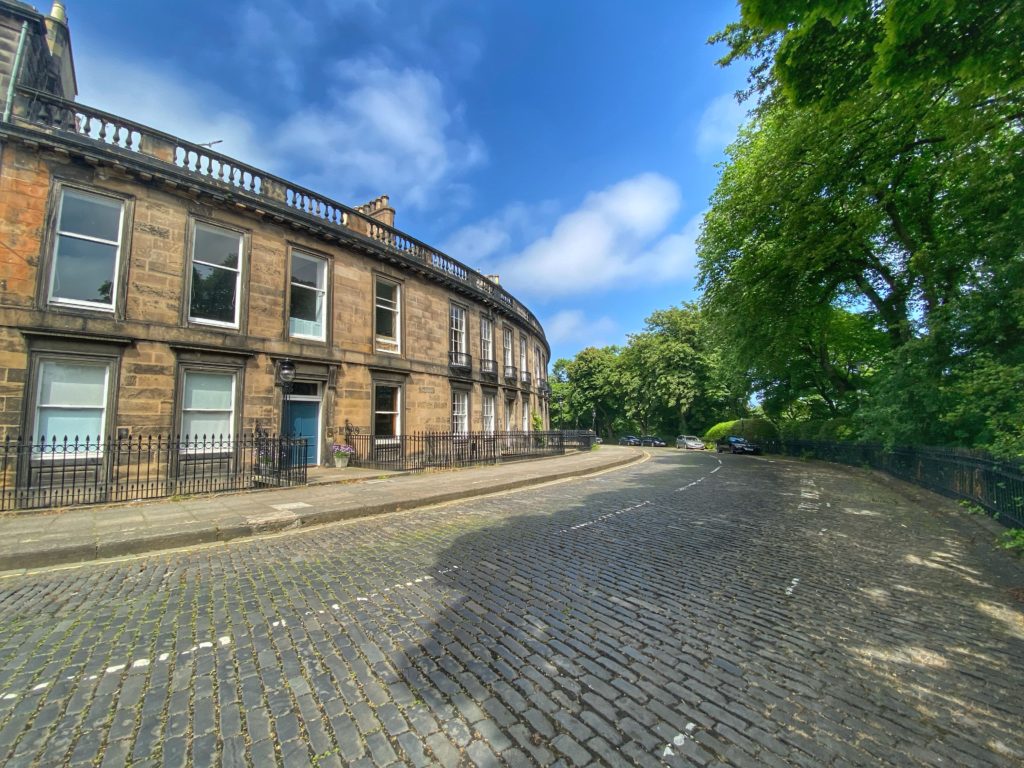
These beautiful cobbled streets and sandstone buildings bend around Calton Hill, preserving the natural landscape. In addition, only one side of the street has buildings while the other side is green space. It makes for a beautiful balance in the middle of a capital city.
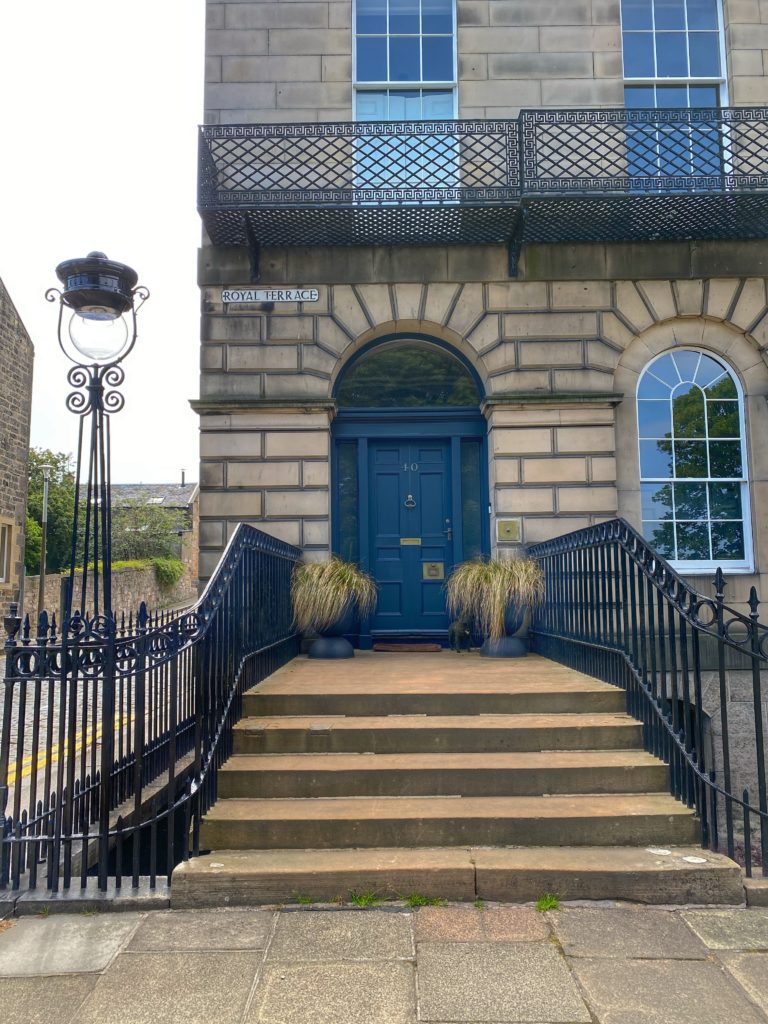
A welcoming doorway on Royal Terrace, where even the street lamps are in keeping with the neoclassical style of intricacy and design.
From our Brunswick Street home, you’ll have access to the roof terrace which might just give you a glimpse of Playfair’s blending of the natural landscape with his work.
Playfair successfully built a practice in Edinburgh and in 1817 won a competition to finish the work begun by Robert Adam designing the University of Edinburgh Old College, which still stands as their law school in South Bridge today.
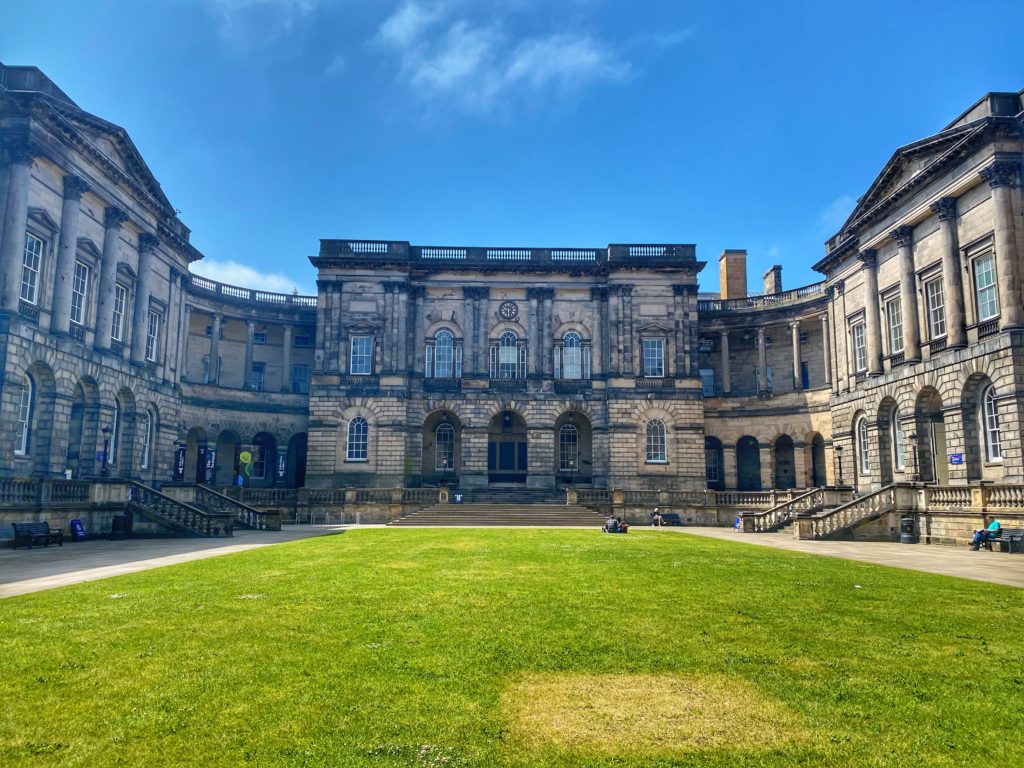
Themes that often occur in his designs are classicism, greek revival and regency. He loved to play with light and shade, ensuring the intricate details of his structures were neatly followed through, so contrasting shadows and light would further amplify the beauty of his work. He was also known to produce serval detailed and refined drawings for each project. And he could be difficult with builders, scrutinising their work to ensure the vision in his mind was accurately constructed in the real world.
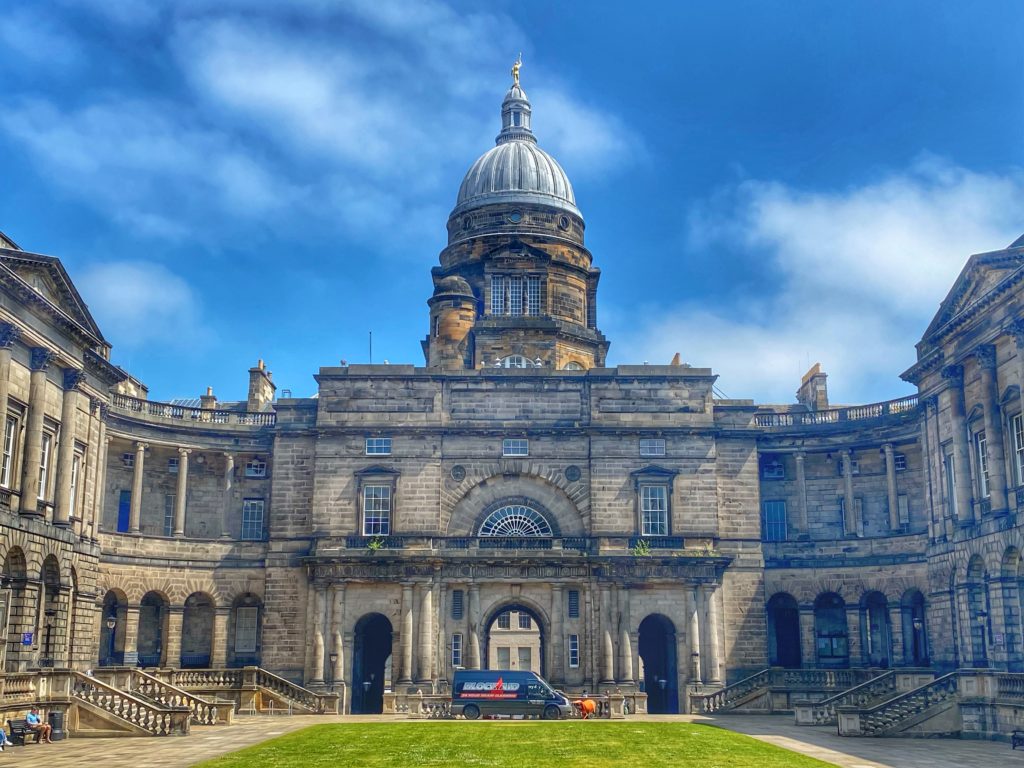
Edinburgh’s Old College is a good example of his play with light and shadows. Standing in this courtyard you can look in any direction and find impeccable work, from the symmetry and fine detailing to the neoclassical influence and impressive archways.
Significant Buildings in Edinburgh
Although his work on the University of Edinburgh’s Old College brought some attention to his work, it was his undertaking of the 1820 design of Regent Terrace, Royal Terrace and Calton Terrace, photographed above, in Edinburgh’s East New Town which catapulted William Playfair to prominence. Over the following thirty years, he played an important part in designing many of the buildings that make Edinburgh the city it is today.
Royal Scottish Academy building and the National Gallery of Scotland
The Royal Scottish Academy building is situated on the Mound in the centre of Edinburgh. Construction of the building began in 1822, with an extension completed in 1836. Along with the National Gallery of Scotland, these neoclassical buildings with strong Greek influences helped create Edinburgh’s claim of being a modern-day ‘Athens of the North’.
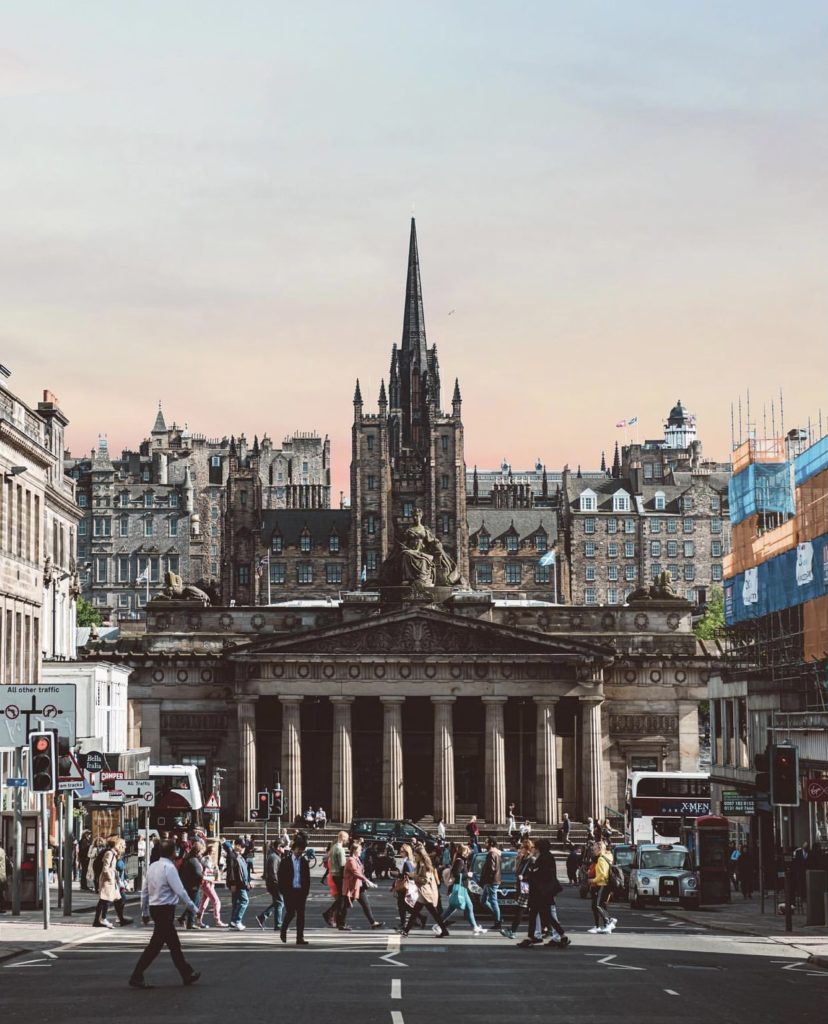
At the bottom of the Mound, from Princes Street you see the famous columns of The Royal Scottish Academy. Photo: @dalge
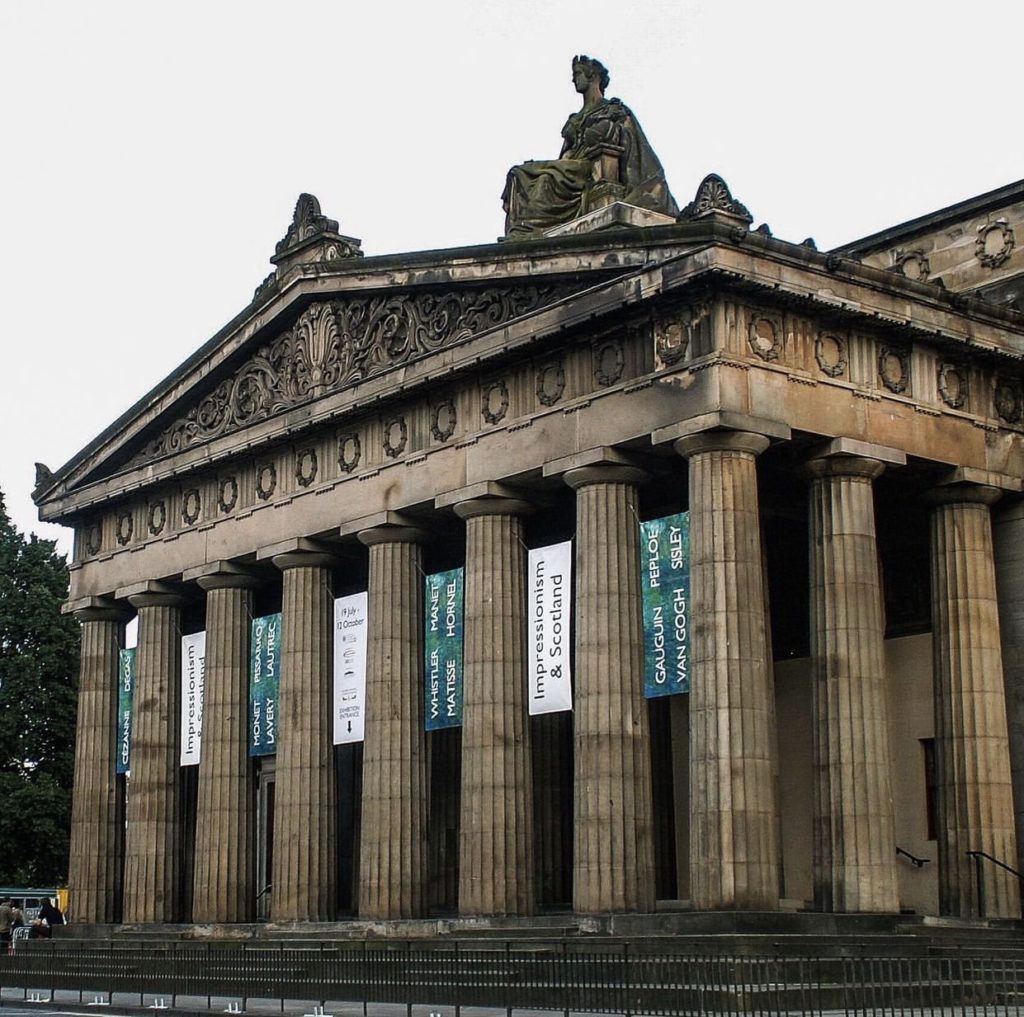
A sculpture of Queen Victoria sits atop the building, sculpted by Sir John Steell. Photo: @devisval
The National Gallery of Scotland, now known as the Scottish National Gallery is the national art gallery for Scotland, located just behind the Royal Scottish Academy building on the Mound. Sadly this building did not open until 1859, roughly two years after Playfair’s death. It seems fitting that he, who had such regard for art and its beauty, would be the man to design the home of art in Scotland.
In the early 2000s, the National Galleries announced the Playfair Project, to create a new basement entrance to the National Gallery in Princes Street Gardens and an underground connecting space, called the Weston Link, between the Gallery and the renovated Royal Scottish Academy building. Opening in 2004, today you can find one of our favourite cafes here, The Scottish Cafe & Restaurant serving up fantastic locally sourced food.
Calton Hill
A magnificent hill to the east of our city centre. A perfect place to take in the views of Edinburgh and is graced with several of Playfair’s designs, including the City Observatory, a monument to his uncle, Professor John Playfair and one of his most talked-about structures, the National Monument.
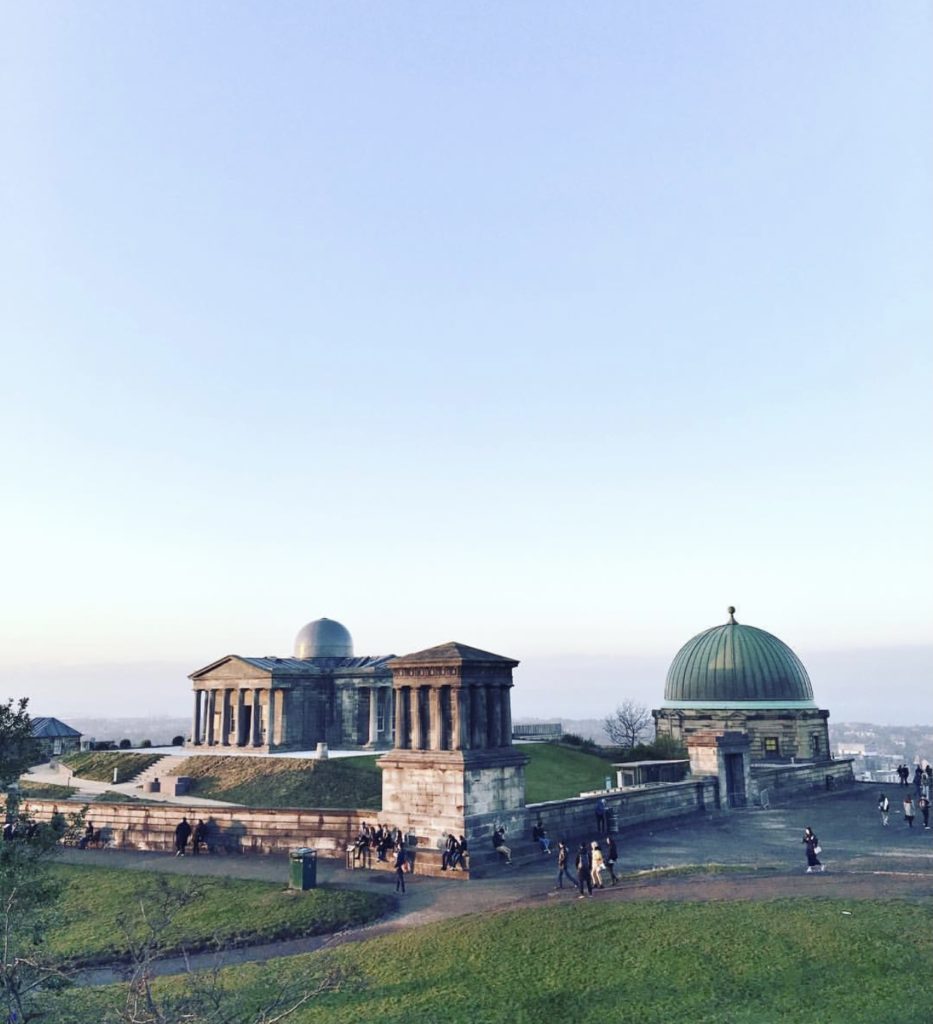
The observatory on Calton Hill, designed by Playfair, now occupied by Collective, who bring people together with art, renovating the observatory which now includes an exhibition space.
The National Monument was designed to commemorate the fallen of the Napoleonic Wars. it was decided to make Edinburgh’s resemblance to Athens a literal one by building a replica of the Parthenon here. Work began in 1826 but ended three short years later when the money ran out in 1829, leaving the facade you see today.
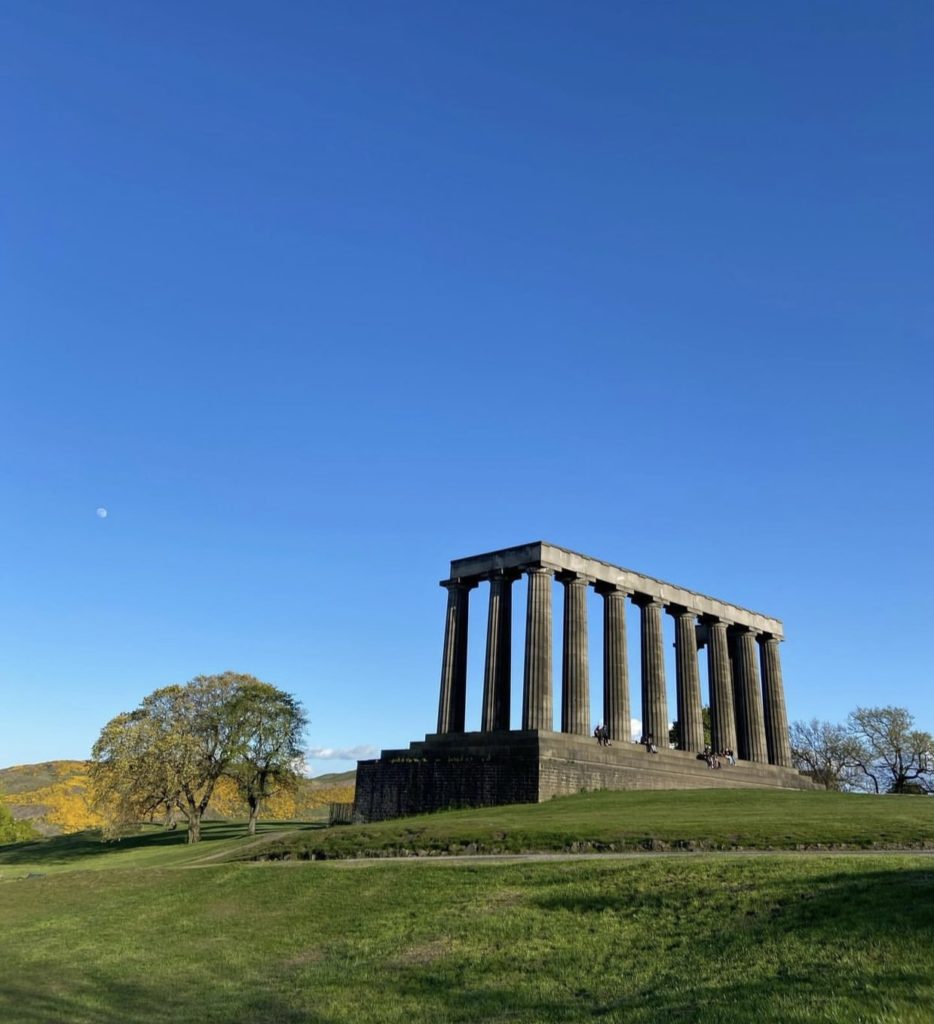
Ironically, the reputation of Edinburgh being the ‘Athens of the North’ came from the large number of buildings in the city whose designs were anchored in models of classicism and Greek revival style, many of which were designed by Playfair himself.
It is suggested that this was all that was intended, but it seems more likely that the original aspiration had been for a complete replica, including catacombs and a church in the form of a temple. What do you think? Is the image above the finish product, or was it only just started when funding ran out… Let us know in the comments below.
St Stephen Church
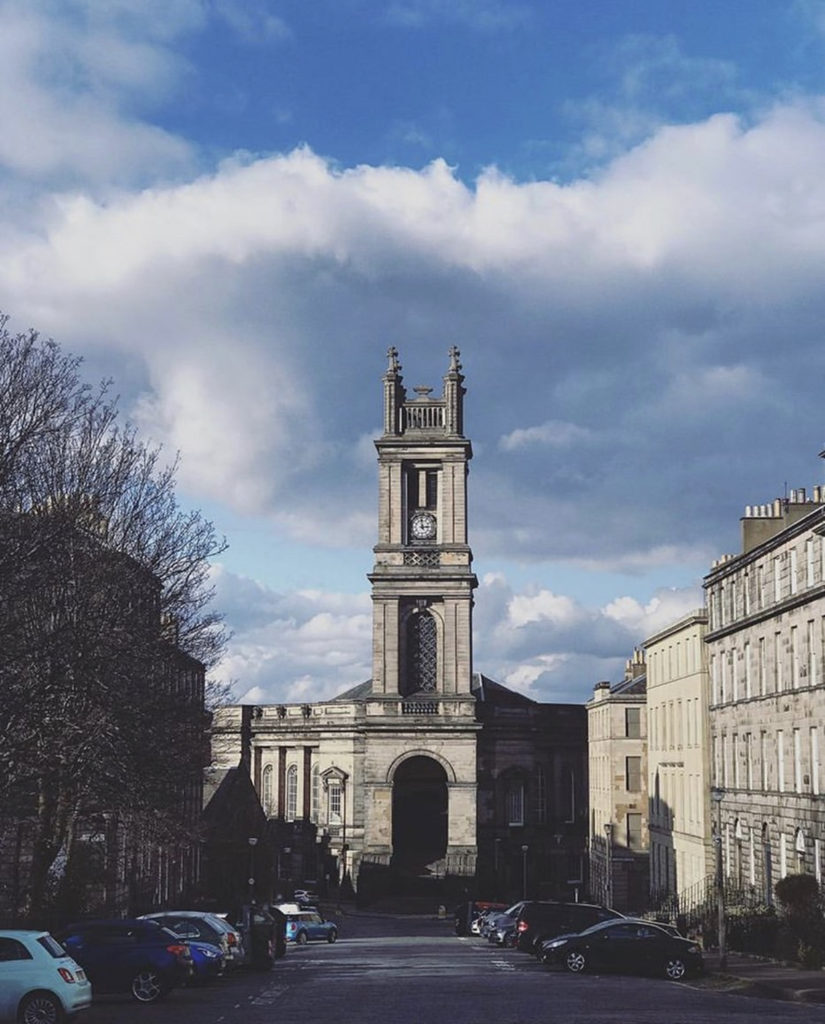
Photo: @thisisedinburgh
A gorgeous church, now known as St Stephen’s Theatre, was built in 1827-1828 and can be spotted as you make your way down the New Town towards Stockbridge. With the longest clock pendulum in Europe, measuring at 49 metres, the tower of this church rises high above and has become somewhat of a landmark with Stockbridge. It can often be found in the background of famous Instagram locations such as Circus Lane too. Right around the corner you will find Royal Circus, wonderfully curved streets with exquisite Georgian homes, also designed by Playfair.
In 2017 Peter Schaufuss, ballet dancer and founder of the English National Ballet School bought the church with the eye to turning it into a world-class theatre. After much refurbishment, the main hall now named Ashton Hall is one of the largest performing spaces in Scotland.
Donaldson’s Hospital
In 1851 the Donaldson’s School, which predominantly served deaf children, was founded in the A-listed Donaldson’s Hospital building, designed by Playfair. The building was designed in the Jacobethan inspired Elizabethan manor houses, being built around a quadrangle in Tudor architecture style with large corner towers. These towers are themselves made up of four smaller towers. The building was opened by Queen Victoria in 1850 and rumour has it, she said the building was more impressive than many of her own palaces.
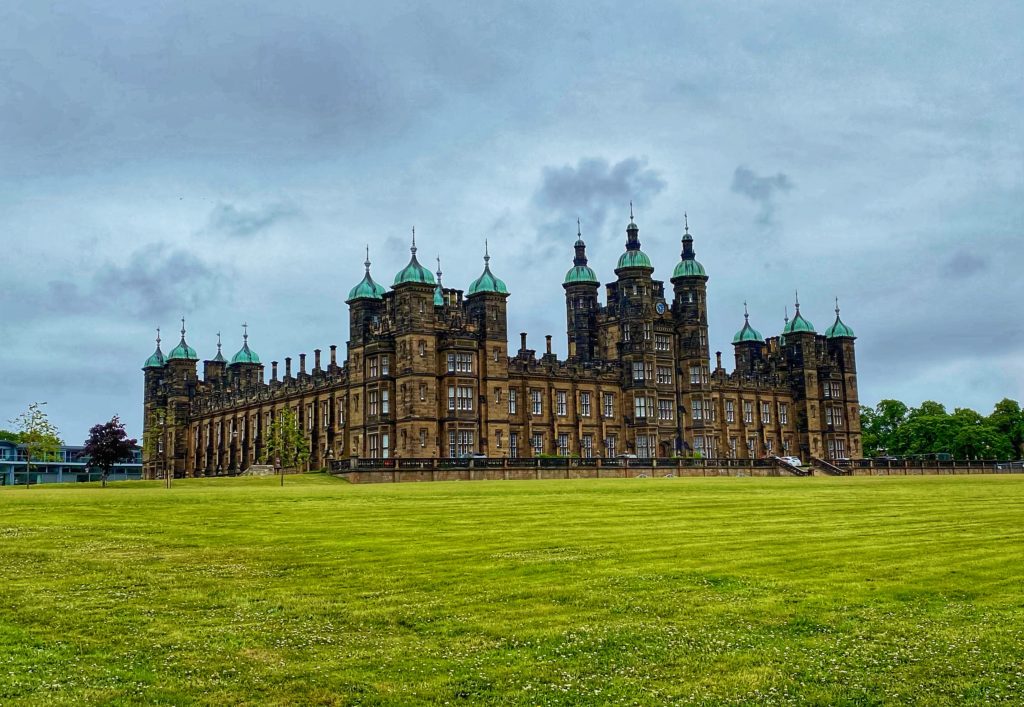
The Donaldson is a stand out building in the West End of Edinburgh, now home to luxury apartments.
After more than 150 years in the building, it was no longer fit for purpose and Cala Homes took over the building, transforming it into luxury homes in the city. The building will forever stand out in the landscape near Haymarket train station and we hope the exterior and grander are continually protected.
Stay at Glencairn Crescent and the Donaldson is just around the corner.
William Henry Playfair did not limit his talents to Edinburgh, you can find many of his buildings and contributions to design around Scotland. It is hard to imagine in today’s world any one particular architect having such a significant impact on a cityscape, and to know that over 200 years later these buildings are still standing and still as impactful on our landscape. It is a testament to Playfair’s eye and creativity.
Stay in South Charlotte Street
Lovers of architecture, and those wanting to be in the very centre of Edinburgh will thoroughly enjoy their time in our grand two bedroom home which overlooks beautiful Charlotte Square.
Get in touch with us to start planning you trip to Edinburgh.

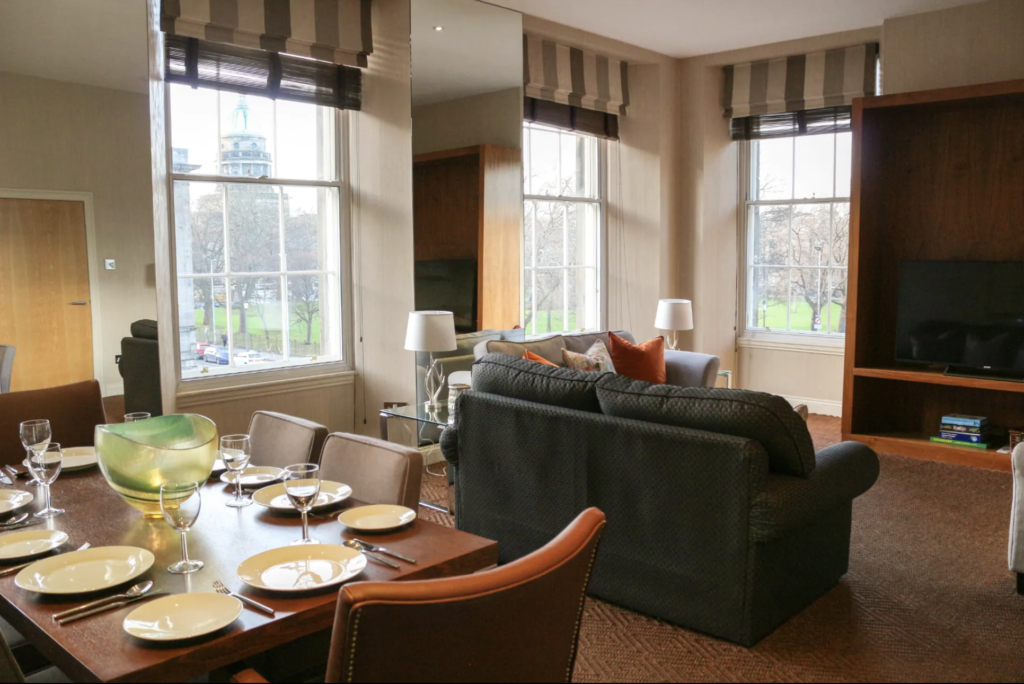


Leave a Comment